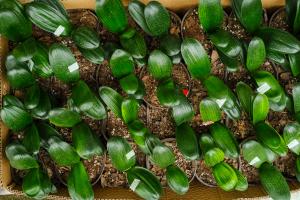How to Plant Water Lettuce
Water lettuce, also known as Pistia stratiotes, is a floating aquatic plant that thrives in warm temperatures and still waters. It is an excellent addition to any water garden or aquatic ecosystem, as it helps to filter the water and provides a home for aquatic creatures, such as fish and frogs. In this article, we’ll explore the steps involved in planting water lettuce and how to care for it.
Step By Step Guide to Plant Water Lettuce
1. Choose the right location: Water lettuce requires a warm, sunny spot with still water. Look for a spot in your pond or water garden that gets at least six hours of direct sunlight per day and has little to no water movement.
2. Prepare the planting area: Clear the area of any debris or floating plants. Water lettuce will grow best in a shallow area of your water garden, about six inches deep. If you have a container pond, fill it with water and add some aquatic plants to create a natural ecosystem.
3. Acquire water lettuce: Water lettuce is available at most garden centers and nurseries that specialize in aquatic plants. You can also order water lettuce online from reputable sellers. Make sure to inspect the plants for any signs of pests or diseases before purchasing them.
4. Plant the water lettuce: Gently place the water lettuce on the surface of the water, being careful not to submerge it. The roots should hang freely in the water, and the leaves should float on the surface. If you have a large area to plant, try spacing the plants out a few feet apart to allow for growth.
5. Add fertilizer: Water lettuce will benefit from occasional fertilization. You can add a specialized aquatic plant fertilizer once a month to the water to help promote growth and health.
Caring for Water Lettuce
1. Monitor for pests: Keep an eye out for any signs of pest or disease, such as yellowing or wilting leaves. If you notice any issues, remove the affected plants and treat the area with an appropriate solution.
2. Regularly remove debris: Water lettuce can easily trap debris, such as leaves or twigs, in its leaves. Regularly remove any debris that you see floating on the surface of the water, to prevent it from rotting and affecting the plant’s health.
3. Prune regularly: Water lettuce can grow quickly, and it’s essential to keep it under control. If the plants are getting too big, remove a few of the larger ones and discard them. You can also trim the plants as needed to prevent them from getting too out of hand.
4. Overwintering: If you live in an area with cold winters, you’ll need to overwinter your water lettuce. Move the plants indoors in a container with fresh water and give them plenty of sunlight. Alternatively, you can keep them in a heated greenhouse or indoors with grow lights.
Conclusion
Water lettuce is a fascinating and beautiful addition to any water garden or aquatic ecosystem. It’s relatively easy to plant and care for, as long as you provide it with the right growing conditions. Be sure to monitor your plants regularly and take care of any issues as they arise, and your water lettuce will thrive and provide a natural filter for your aquatic ecosystem.

 how many times do yo...
how many times do yo... how many planted tre...
how many planted tre... how many pine trees ...
how many pine trees ... how many pecan trees...
how many pecan trees... how many plants comp...
how many plants comp... how many plants can ...
how many plants can ... how many plants and ...
how many plants and ... how many pepper plan...
how many pepper plan...





























